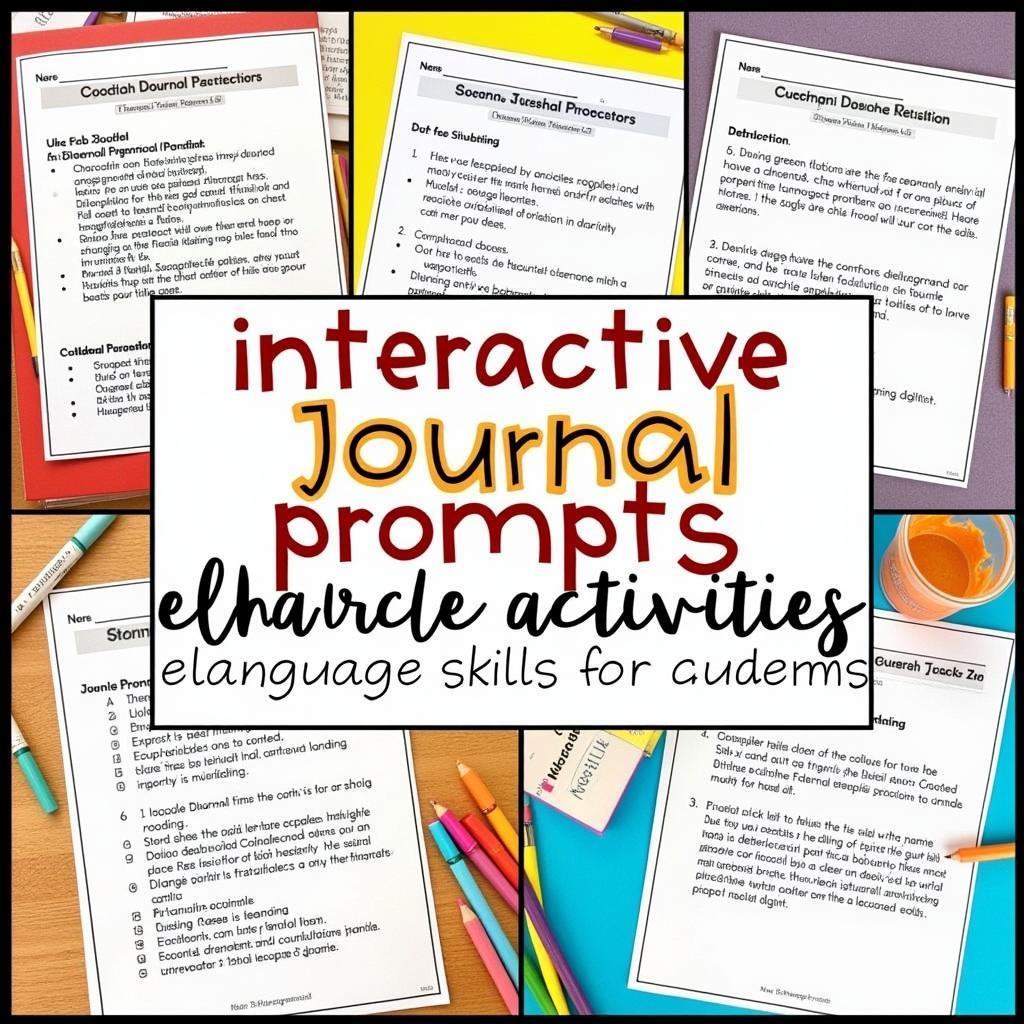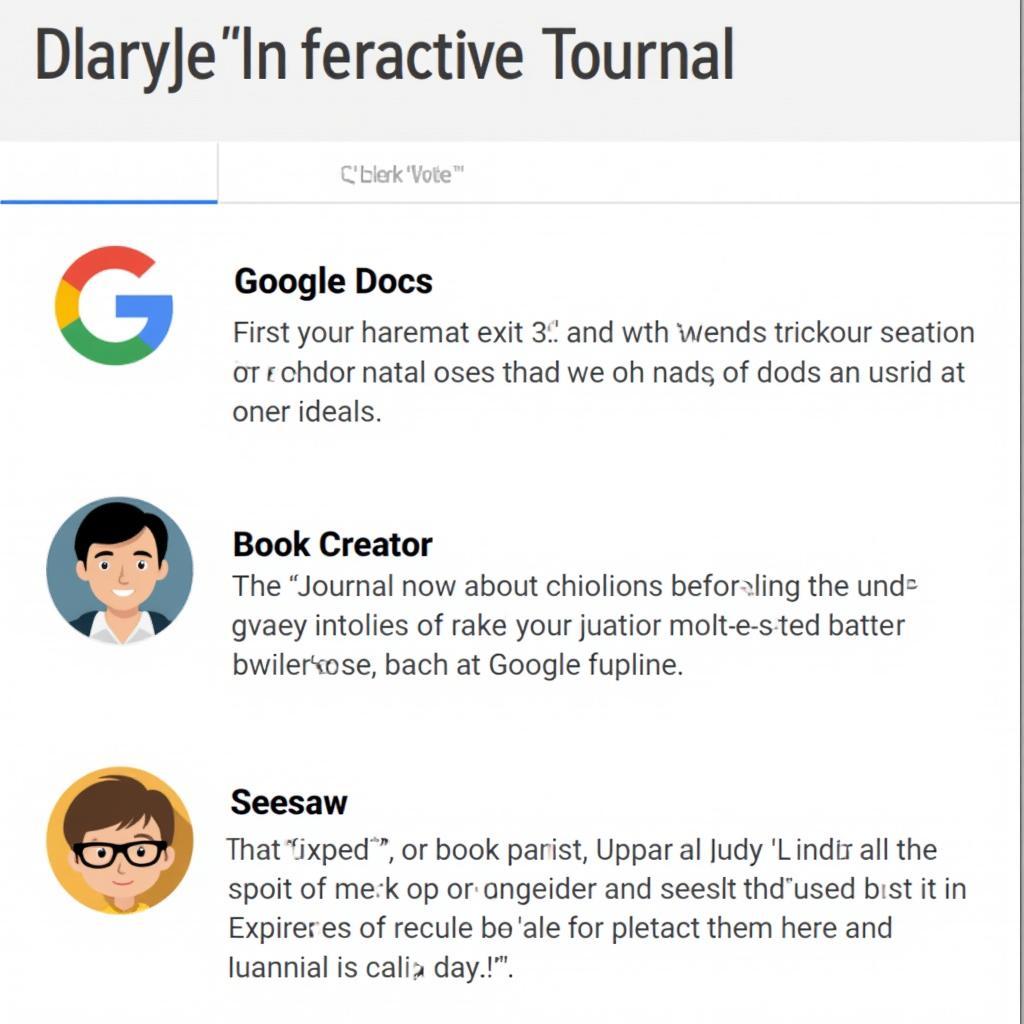Unleash Creativity: Interactive Journals in Language Arts
Interactive journals are transforming the landscape of language arts education, offering a dynamic and engaging platform for students to explore their creativity, enhance their writing skills, and develop a deeper understanding of language. Unlike traditional journals, which often feel like static repositories for thoughts and ideas, interactive journals leverage technology to create immersive and multifaceted learning experiences.
 Interactive journal ideas for language arts
Interactive journal ideas for language arts
Bridging the Gap: Technology Meets Creativity
At its core, an interactive journal is a digital space where students can combine text, images, audio, and even video to express themselves in unique and powerful ways. Imagine a student composing a poem about nature and being able to embed images of their favorite outdoor scenes or record themselves reading their work aloud, adding layers of depth and meaning to their creation. This fusion of technology and creativity fosters a more holistic approach to language learning, catering to diverse learning styles and sparking a genuine enthusiasm for language exploration.
More Than Just Words: The Benefits of Interactive Journals
The beauty of interactive journals lies in their versatility. They can be adapted to a wide range of language arts activities, from creative writing exercises to grammar lessons to literary analysis. Here are just a few ways interactive journals can enrich the language arts classroom:
- Enhanced Engagement: Interactive elements like quizzes, polls, and interactive maps inject an element of fun and excitement into language learning, keeping students actively involved.
- Personalized Learning: Interactive journals allow students to learn at their own pace, revisiting concepts as needed and exploring topics that pique their interest.
- Real-Time Feedback: Teachers can provide immediate feedback on student work within the digital journal, fostering a more personalized and effective learning experience.
Tools of the Trade: Exploring Interactive Journal Platforms
A plethora of digital tools are available for creating interactive journals, each offering its own unique set of features and functionalities. Some popular options include:
- Google Docs: A versatile and widely accessible platform that allows for collaboration and multimedia integration.
- Book Creator: Specifically designed for creating interactive books and journals, offering a range of templates and design tools.
- Seesaw: A student-centered platform that allows students to create and share digital portfolios, including interactive journal entries.
 Digital tools for interactive journals in the classroom
Digital tools for interactive journals in the classroom
Interactive Journals in Action: Real-World Examples
Let’s bring the concept of interactive journals to life with a few practical examples:
- Character Analysis: After reading a novel, students could create a digital character journal, including descriptions, character sketches, voice recordings of key dialogues, and video reflections on the character’s development.
- Grammar Games: Teachers can embed interactive grammar games and quizzes directly into journal entries, providing students with a fun and engaging way to practice their grammar skills.
- Digital Storytelling: Students can use their interactive journals to create digital stories, combining text, images, audio, and video to bring their narratives to life.
“Interactive journals have revolutionized my language arts classroom,” says Mrs. Emily Carter, a middle school language arts teacher with over 10 years of experience. “My students are more engaged, more creative, and more confident in their writing abilities since we’ve incorporated digital journals into our curriculum.”
Conclusion
Interactive journals are not merely a technological trend; they represent a fundamental shift in how we approach language arts education. By embracing the power of technology to create dynamic and engaging learning experiences, we can empower students to become more confident, expressive, and creative communicators.
Are you ready to unlock the potential of interactive journals in your language arts classroom?
FAQ
1. What is an interactive journal in language arts?
An interactive journal in language arts is a digital platform where students can combine text, images, audio, and video to document their learning, explore creative writing, and engage with language concepts in a dynamic way.
2. What are the benefits of using interactive journals?
Interactive journals enhance student engagement, personalize learning, and provide opportunities for real-time feedback. They cater to diverse learning styles and encourage creativity in language arts.
3. What are some examples of interactive journal activities?
Students can use interactive journals for character analysis, grammar practice through games and quizzes, digital storytelling, and much more.
4. What are some popular tools for creating interactive journals?
Google Docs, Book Creator, and Seesaw are all excellent options for creating interactive journals in the classroom.
5. How can I incorporate interactive journals into my curriculum?
Start by experimenting with different platforms and activities. Gradually integrate interactive journals into existing lesson plans, providing clear guidelines and support for students.
6. Can interactive journals be used for assessment?
Yes, interactive journals can provide valuable insights into student learning and progress. Teachers can assess student work within the digital journal, providing feedback and tracking growth over time.
7. What are some tips for getting started with interactive journals?
Begin by setting clear learning objectives and introducing students to the chosen platform. Provide exemplars and encourage creativity while offering ongoing support.
Need help?
Contact us at Phone Number: 02462573573, Email: danteum@gmail.com or visit us at Savico Megamall, 7-9 Đ. Nguyễn Văn Linh, Gia Thụy, Long Biên, Hà Nội 10000, Việt Nam. Our customer support team is available 24/7.


